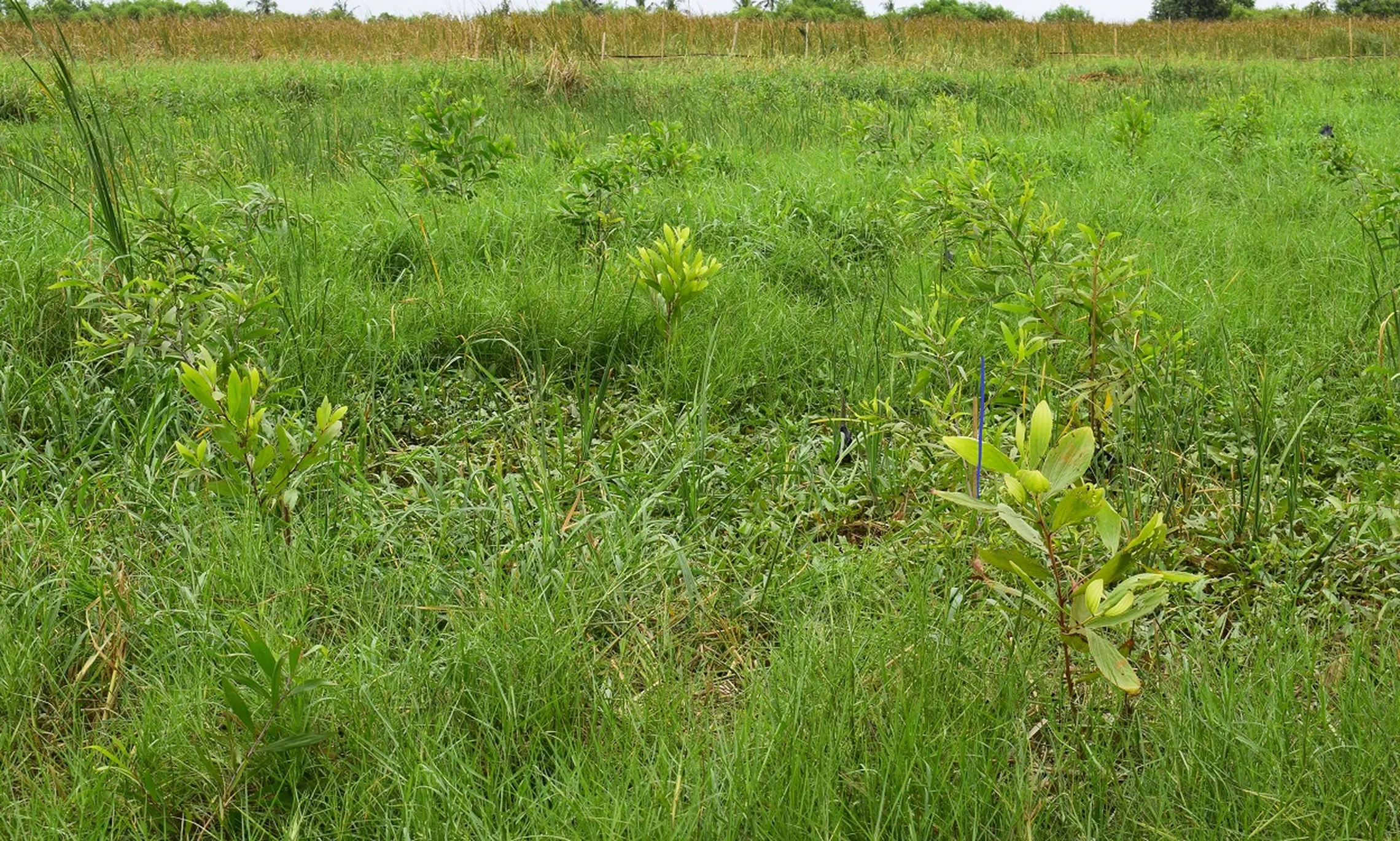Group of seven nature-based, climate-resilient IWRM solutions in Benin
#Water4Climate, sharing several low-cost, locally manufactured IWRM solutions delivered by the OmiDelta NSA Fund

Today, residents of Benin's Lower and Middle Valley sub-basin of Ouémé and the coastal delta are better prepared to meet the challenges of occasional flooding. In this article, we list down seven Integrated Water Resources Management (IWRM) initiatives protecting lives, livelihoods, and creating jobs.
Ahead of COP 26, several bodies of the United Nations called upon the world's leaders to 'urgently accelerate action to address the water-related consequences of climate change.' In parts of Benin, climate change effects are characterised by recurrent flooding, intermittent drought, increased water erosion, and ecosystem degradation. With Dutch funding, SNV – fund manager of the Netherlands government's OmiDelta NSA Fund – has been engaging CIDR–Pamiga, Protos-Join for Water, and VNG International to introduce climate-resilient IWRM systems and to raise the adaptive capacity of communities.

Water level colour-coded warning system

Djassin Tokpa market
Concrete beacon water threshold markers
Reinforced concrete reading beacons with water threshold markers were set up in the flood-prone districts and municipalities of Abomey-Calavi, Ouinhi, Sèmè-Podji, Sô-Ava, Zangnanado, Zê, and Zogbodomè. The coloured bands in the beacons offer a visual early warning system, allowing communities to monitor rising water levels and take timely action to vacate premises before dangerous levels are reached. In the future, the beacons will be maintained by communities and municipalities.
Flood protection dike
Located on the edge of the lagoon in Porto-Novo is the Djassin Tokpa market, mostly run by women shopkeepers. During the flood-prone months of mid-April through mid-November, rising water levels displace shopkeepers and slow down the movement of goods and trade. Since constructing a 45-meter flood protection dike equipped with two ramps and guardrails, the Djassin Tokpa market is now relatively floodproofed. Women shopkeepers can now continue their trade throughout the rainy season.

Pond deepening

Riverbed sediment collection in progress
Pond deepening and set-up of soil-water conservation practices
In the Lower and Middle Valley sub-basin of Ouémé, several soil-water conservation practices help reduce water flow, flooding, and erosion. Known as CES (Conservation des Eaux et des Sol; Conservation of Water and Soil), these practices include pond deepening and setting up fascines, earthen bunds, and stone barriers. Pond deepening in the area can hold at least 3,000 m3 of water, which may be used for small-scale market gardening. Because fascines, earthen bunds, and stone barriers are made of local materials and may be delivered by non-specialist workers, community members were trained to undertake the necessary. This know-how is envisaged to contribute to the expansion of labour opportunities for residents.
Regular maintenance of sediment inputs in riverbeds
Nearly 200 operators in the river sand industry were mobilised to regularly free up the riverbeds of sediment inputs, particularly sand. Regular river maintenance facilitates better water retention, thereby minimising the risk of flooding. Operators from the industry received support for organisational development and were provided equipment, e.g., shovels, buckets, wheelbarrows, gloves, motorised boats, and sand storage areas. Steps to professionalise operators were also taken, leading to their official recognition as labourers.

Newly constructed gutter to protect Abomey residents

Waterway clearance in progress
Gutters for better drainage
Until 2019, flooding in the Tokpa Zoungo neighbourhood in Abomey, Calavi commune exposed residents to stormwater and sewage from Abomey Calavi University. In response to this, two concrete gutters were built: section 0.9mx1.00m; and 0.6mx0.6m. The total length of the gutters is 195 linear meters. To benefit more areas, the project added a waterway clearance of over 2,643 meters. New infrastructure and the clearance work undertaken have ensured that houses are no longer inundated from April through August.
Waterway clearance
The communes of Zè and Abomey Calavi benefited from the support of communities in Sèdjè, Kpodji-Lèmon, and Ahokpa. They mowed and decongested the former's waterways to improve flow and avoid water stagnation. An area of 15,535 linear meters of the waterway was decluttered, unclogging flooded-in land areas, and exposing land for food crop cultivation, as in the case of Sèdjè in the municipality of Zè.

Mangrove restoration for a better ecosystem
Ecosystem conservation: mangrove regeneration
Mangroves help mitigate potential damages linked to climate change effects by providing protection against land erosion and strong winds, safeguarding nurseries, and ensuring the availability of firewood. OmiDelta NSA Fund project findings from a participatory environmental assessment on the excessive destruction of mangroves in the municipality of Aguégués were used to inform the creation of a community ecosystem management action plan for participating villages. For example, in the localities of Djigbécomè and Aniviécomè in the municipality of Aguégués, a total mangrove area of 5ha was restored through the in-kind contributions of communities.
This group of seven nature-based, climate-resilient IWRM solutions were delivered to communities by international development partners of the Governments of Benin and the Netherlands. Plans are underway to cascade the know-how to maintain and take to scale these life-saving and preventative measures throughout Benin.
Written by: Agossa Messan Hadonou with Anjani Abella and Margot Piquet
More information: This article was produced as part of the SNV-managed OmiDelta Non-State Actors' Programme. The programme started in December 2016 and concludes in December 2021. Find out more about the programme here and/or email Ousmane Ibrahim, Project Manager, or the WASH team in SNV in Benin.